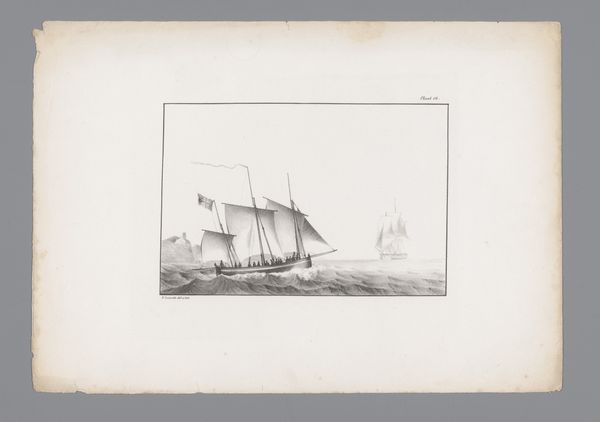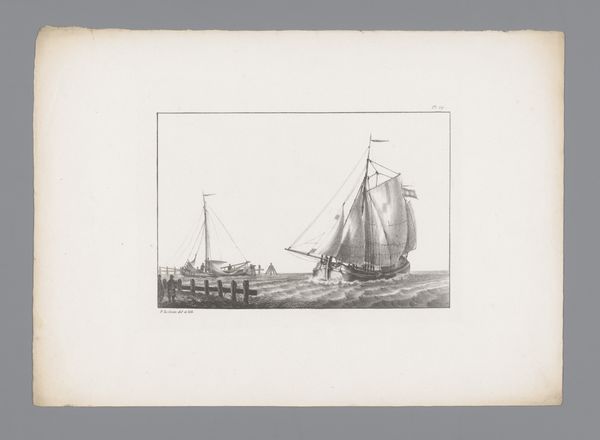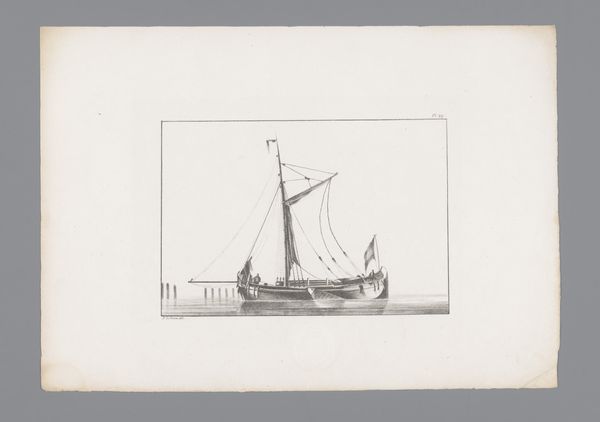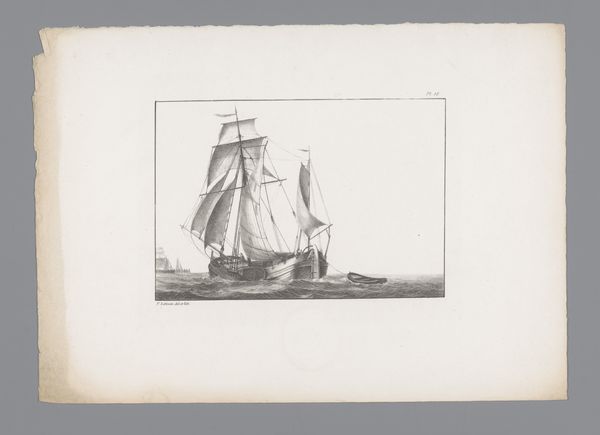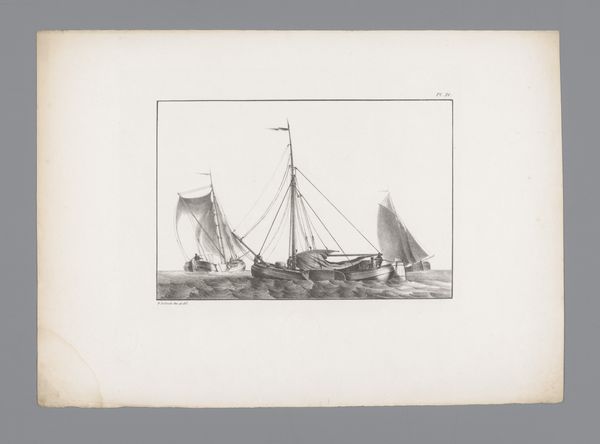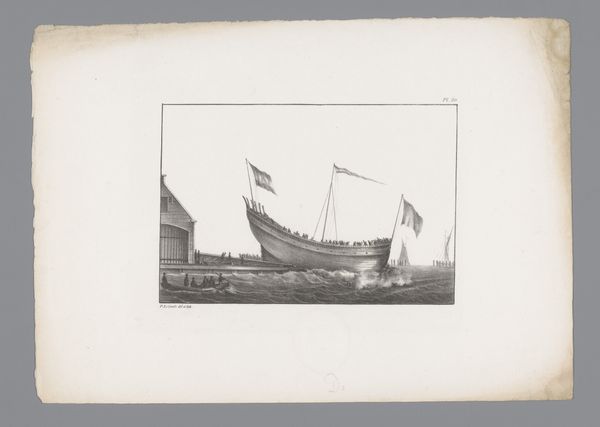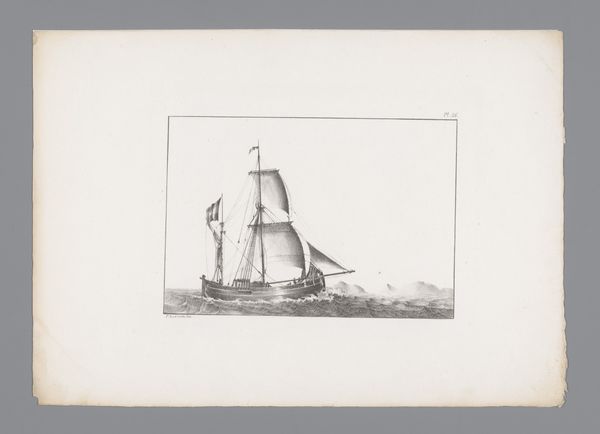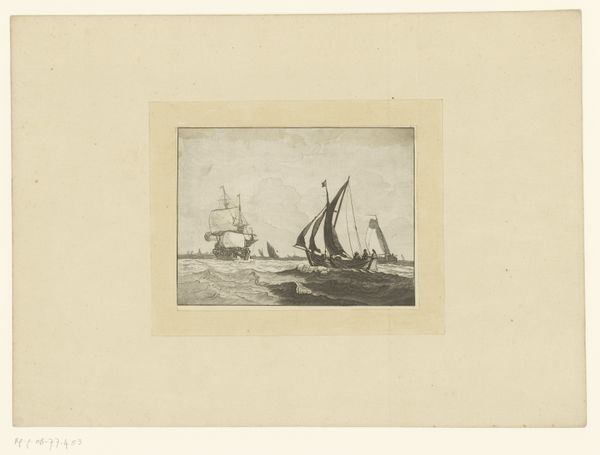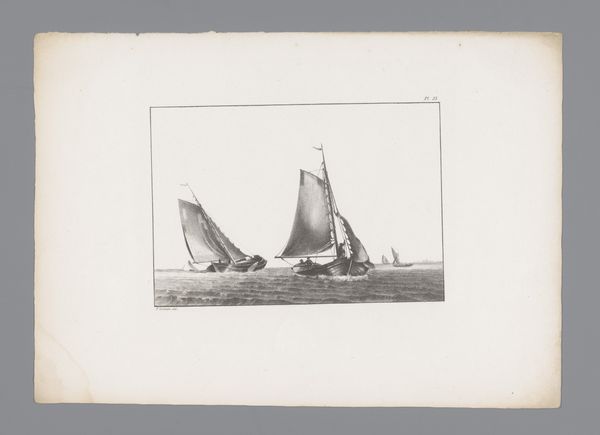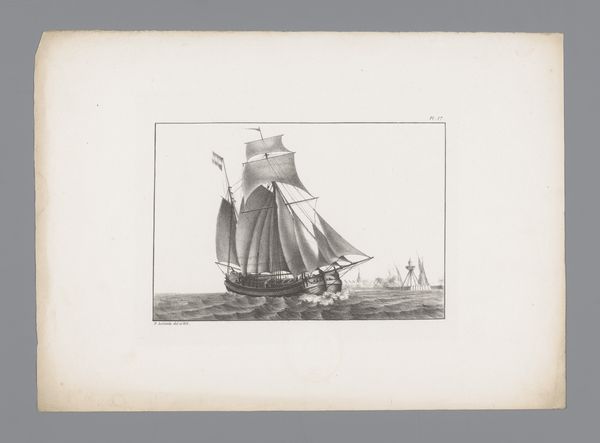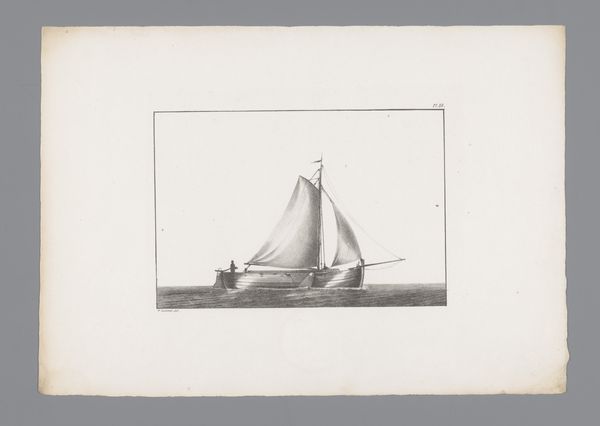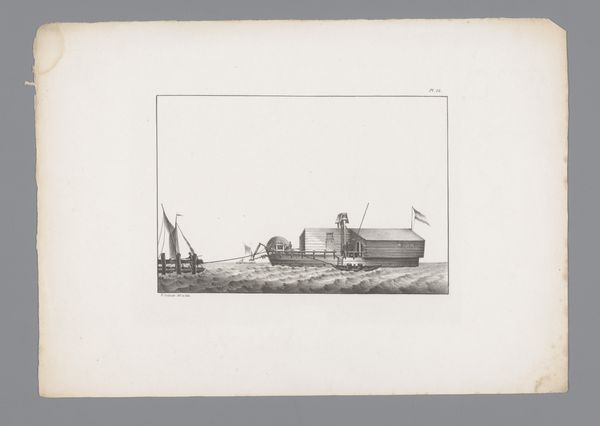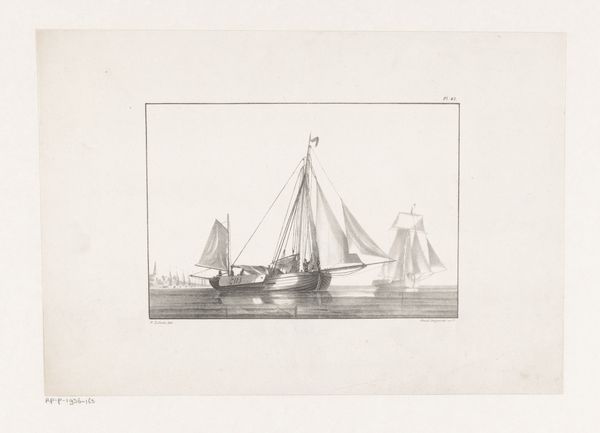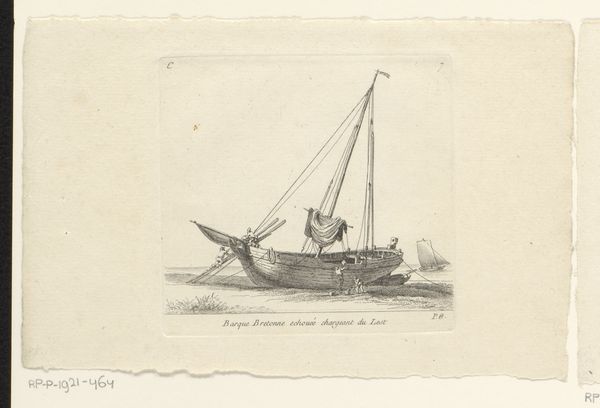
print, etching
# print
#
etching
#
landscape
#
line
#
realism
Dimensions: height 245 mm, width 350 mm
Copyright: Rijks Museum: Open Domain
Curator: This etching, simply titled "Kaag," was created in 1831 by Pieter le Comte and offers us a glimpse into 19th-century Dutch maritime life. The scene captures boats on calm waters, with incredibly precise line work. What are your first impressions? Editor: It feels tranquil, almost still. The composition is dominated by the larger boat, drawing my eye immediately, but the etching overall feels subdued, despite the activity on deck. A feeling of the ordinary in the every day is present here. Curator: Ordinary perhaps, but notice how le Comte elevates a common subject to something quite graceful through the interplay of light and shadow in his use of realism. The main boat appears active, crew visible at work. These were real boats, used for transporting goods and people, which lends a certain truth to the imagery. Editor: I find the smaller boat more intriguing. Its delicate presence hints at broader maritime connections. Were these boats common sights, symbols of the local economy or perhaps representative of Dutch mercantile power at that time? What would a citizen of Kaag think of seeing this in their home or public spaces? Curator: Boat imagery was undeniably popular during the Dutch Golden Age and the 19th-century, echoing Dutch commercial success and their connection to the sea. This symbol retained popularity through various upheavals in socio-political history as the cultural memory remained resilient. Consider, too, that prints like these made art accessible to a wider audience beyond the elite. Editor: Right, so the circulation of images reinforces those associations across different social strata. So this print is less about portraying a unique individual vessel, and more about reinforcing an idea: of Dutch maritime identity, a national ethos through commonplace scenery. I wonder if this artwork provided any pushback to the artistic institutions in place at the time. Curator: Absolutely. By portraying something as inherently quotidian as the act of shipping by Kaag, the work participates in the politics of seeing as it presents ordinary scenes, and consequently elevates it to a form worthy of our gaze. Editor: It's fascinating how a simple scene, captured through the etching process, can resonate so profoundly with cultural memory and ideas about national identity. A quiet visual reminder, yet with enduring echoes. Curator: Exactly, an intimate depiction filled with national and social implications. It all feels quite profound when one takes the time to look and contextualize its creation.
Comments
No comments
Be the first to comment and join the conversation on the ultimate creative platform.
